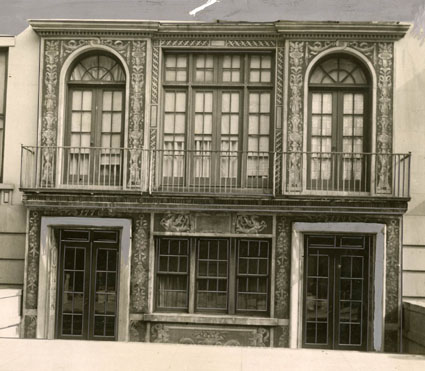Co-op Board and Romanian Art Experts Team Up To Save Rare Facade

020.jpg
By Phoebe Neidl
BROOKLYN HEIGHTS — It has been seven years since the residents of 177-179 Columbia Heights realized that the facade of their building was a work of art.
In 2005 they discovered lavish ornamentation adorning the first two floors of their 29-unit co-op building in an Italian design technique known as sgraffito. The pictorial of fruit, flowers and mythical creatures, which dates back to 1920, was faded and water-damaged and had been hidden under a coat of yellow paint for decades.